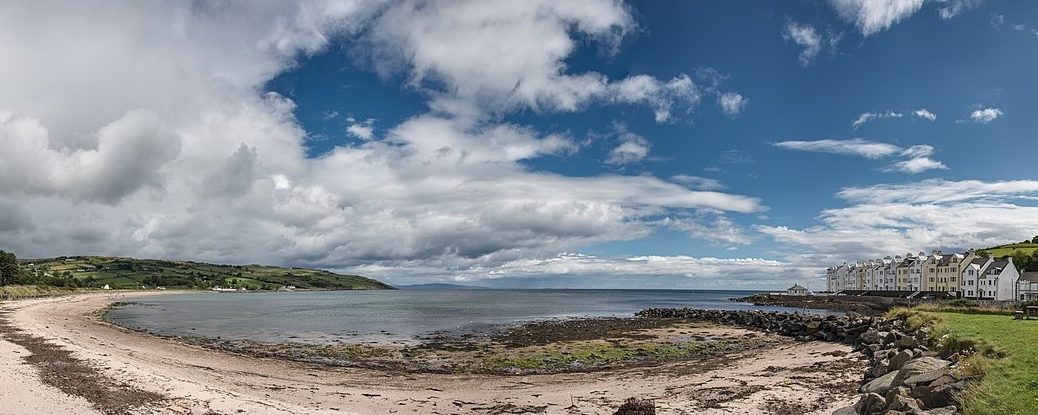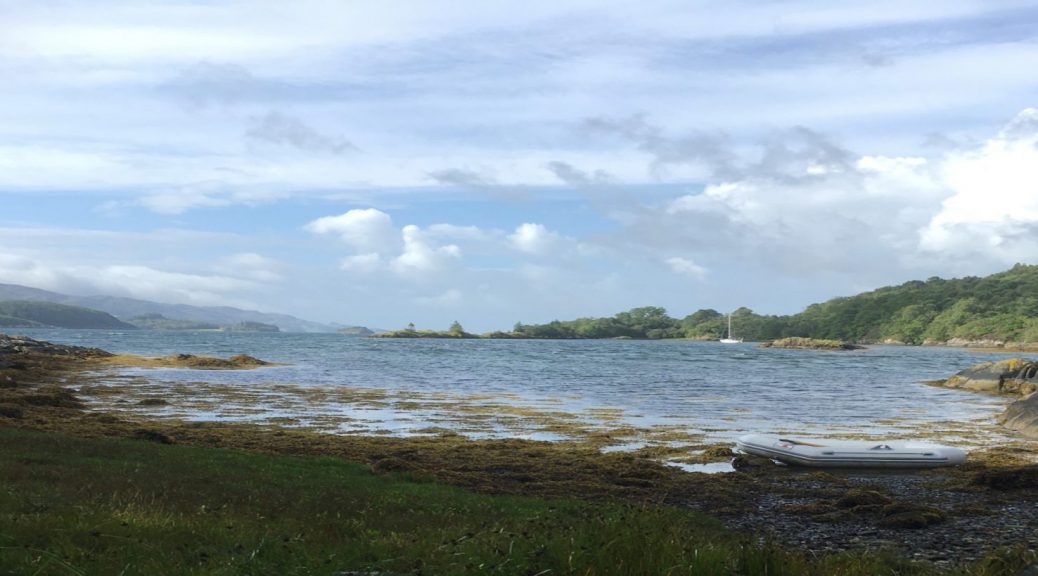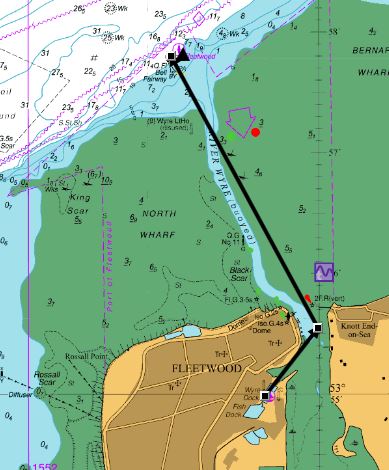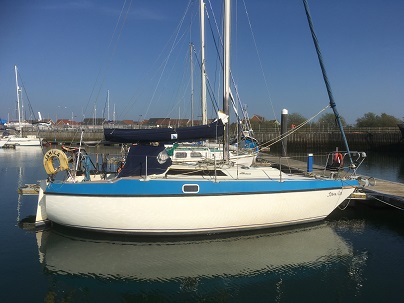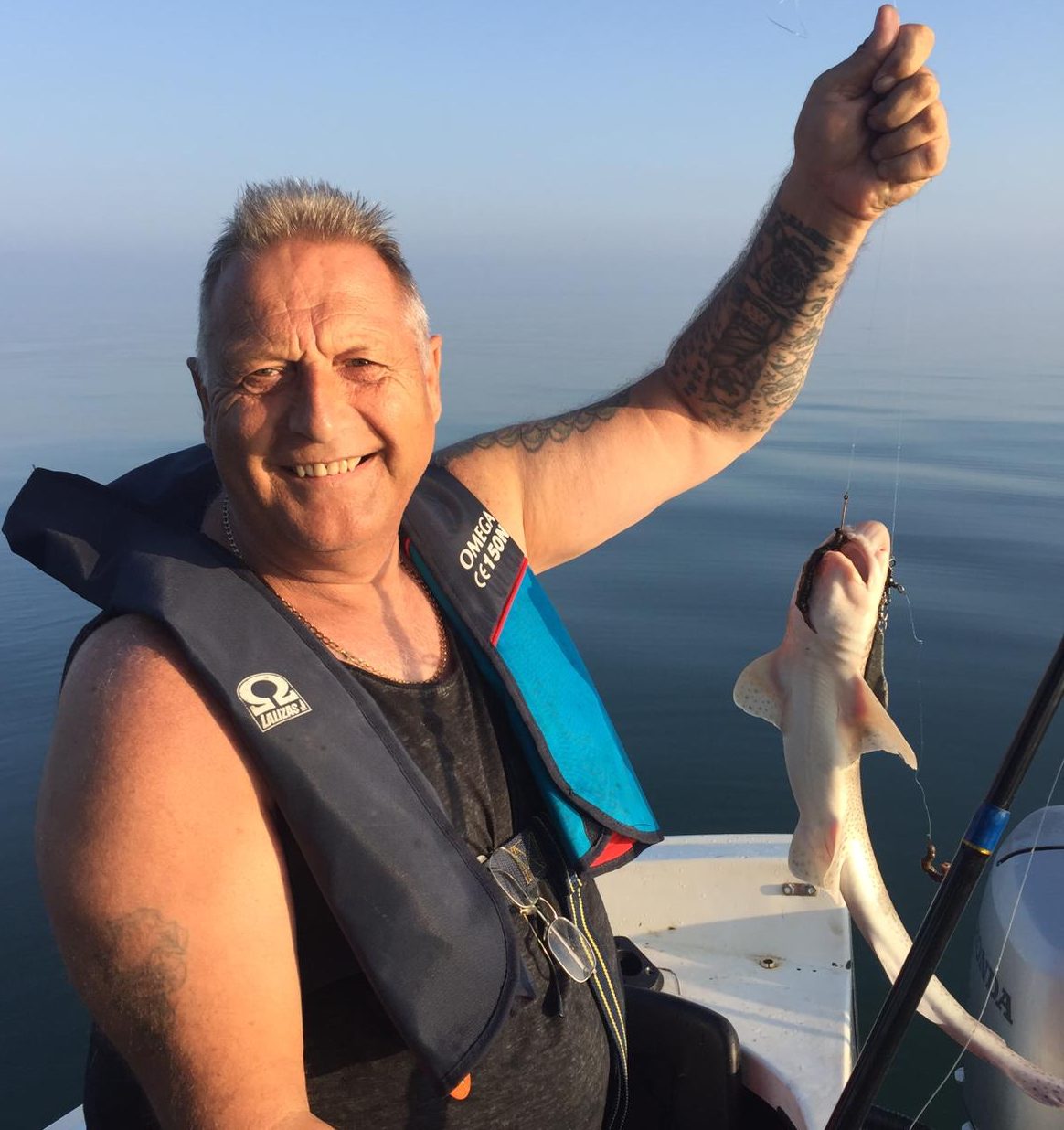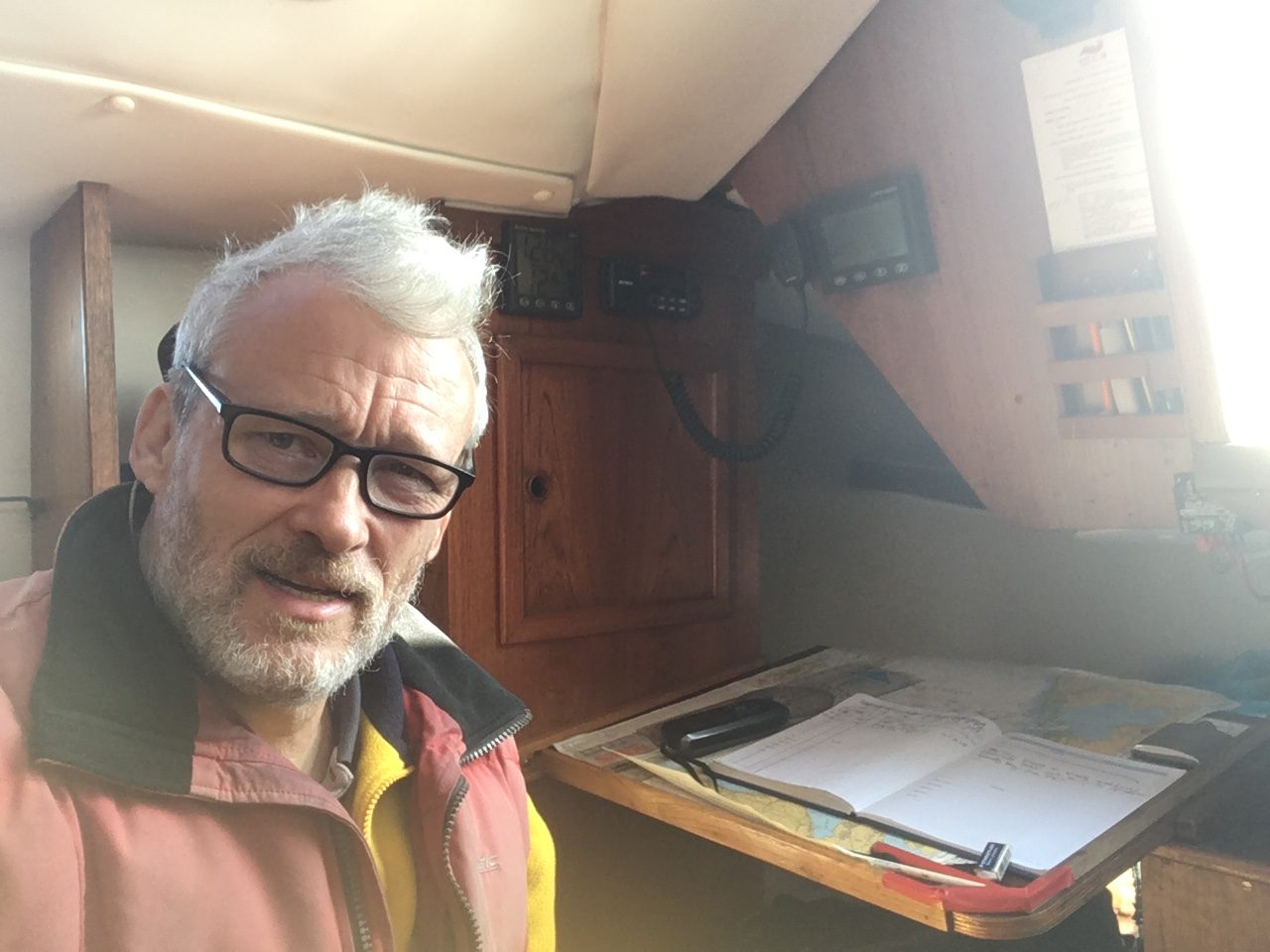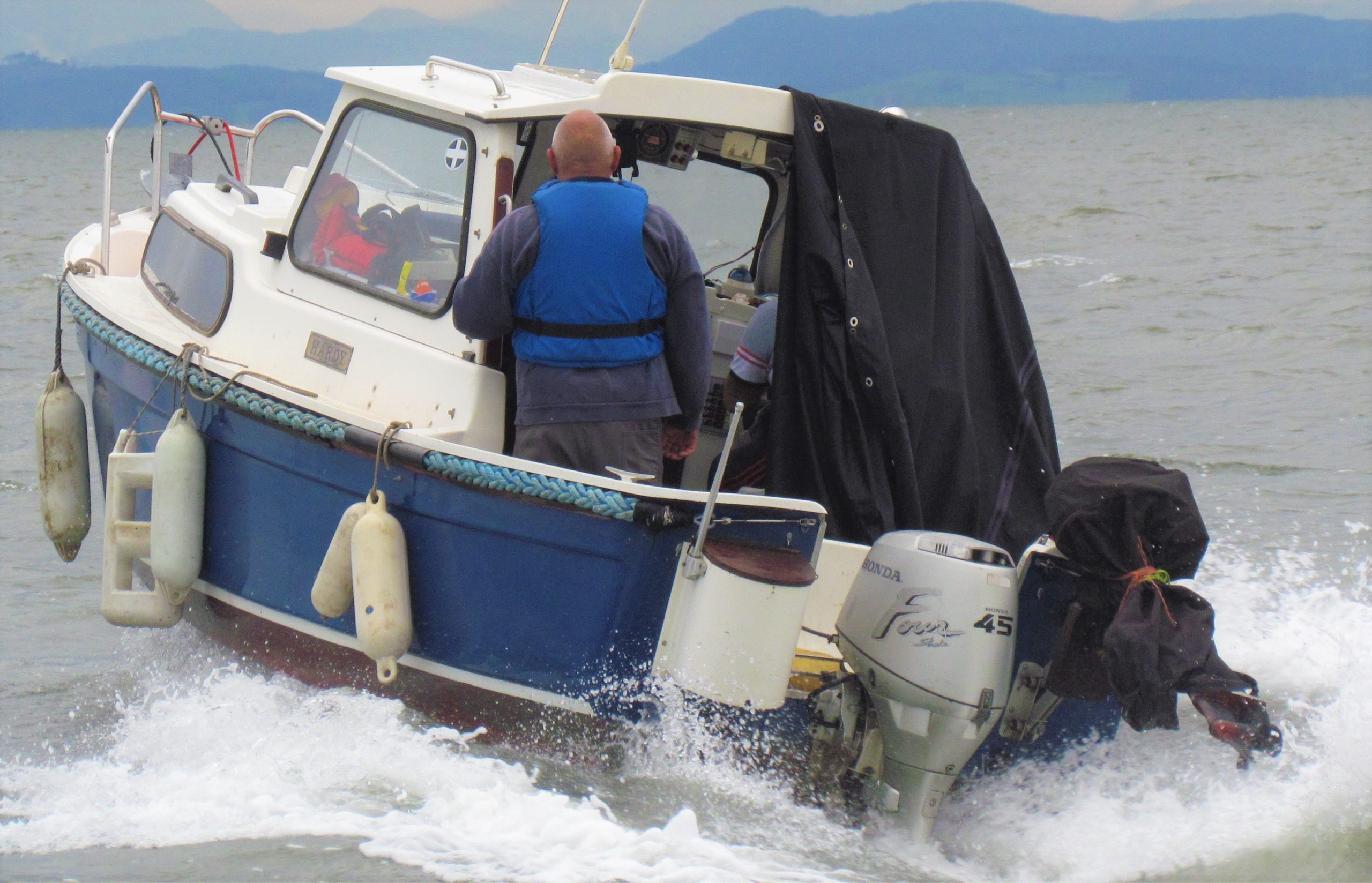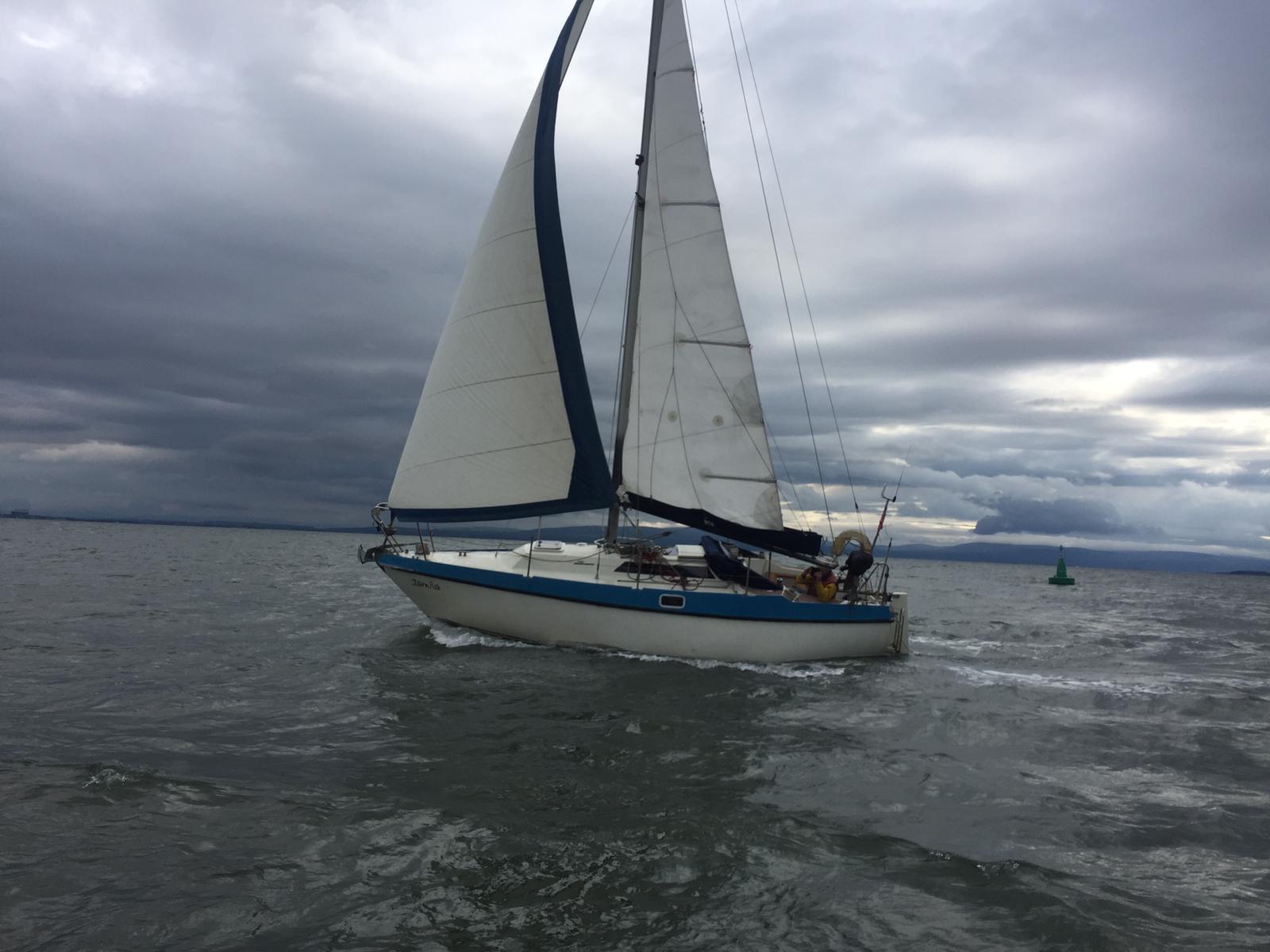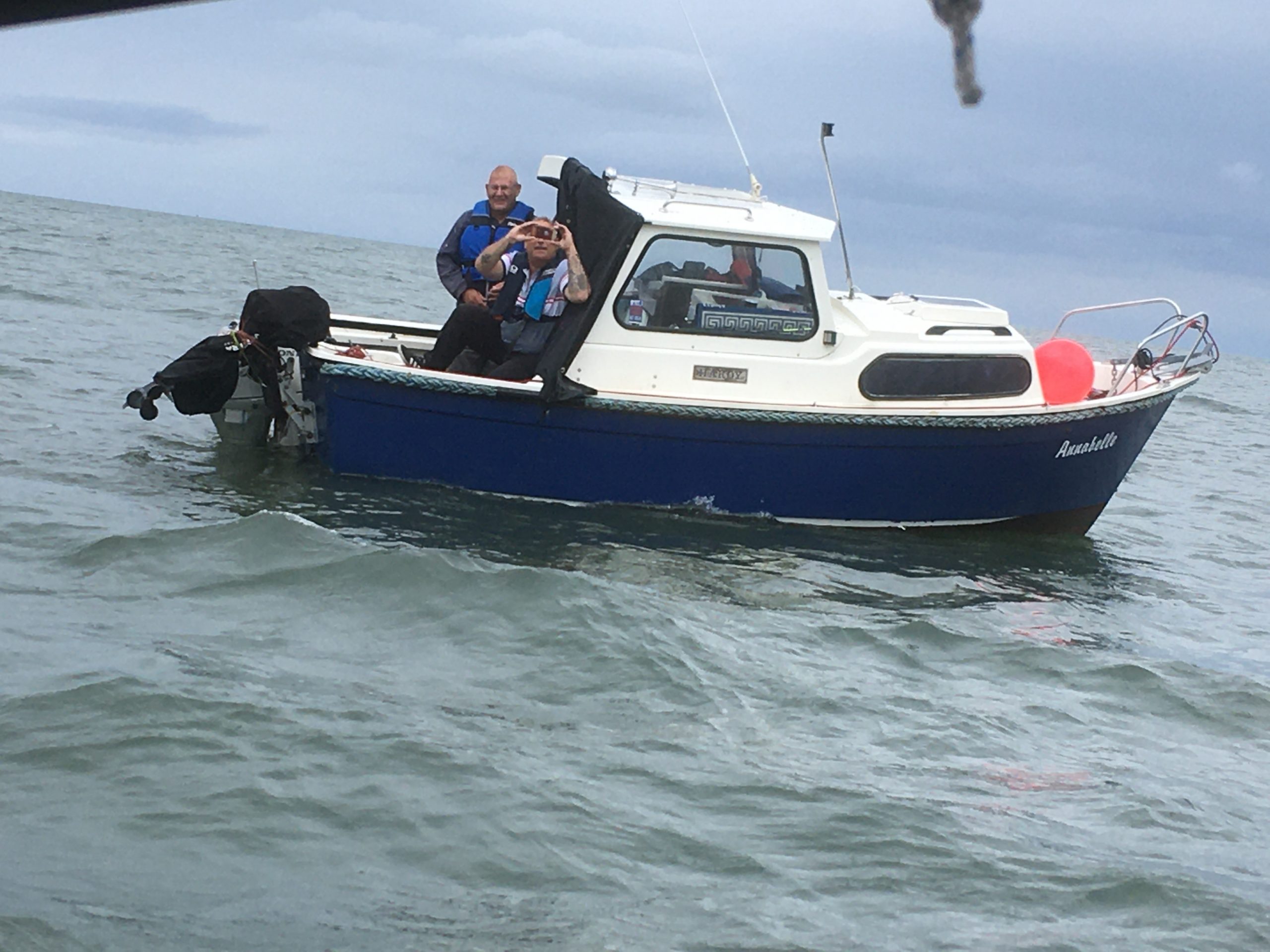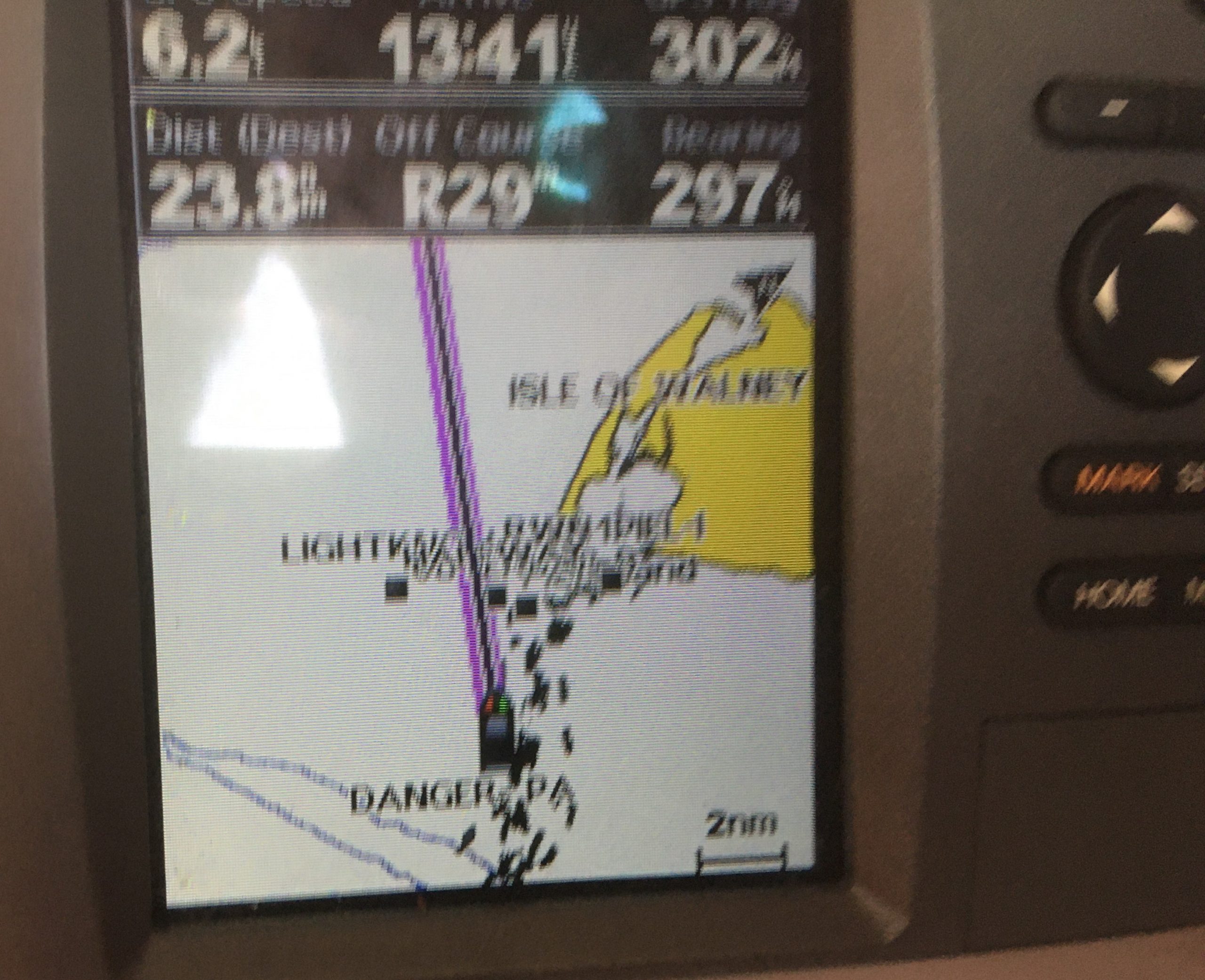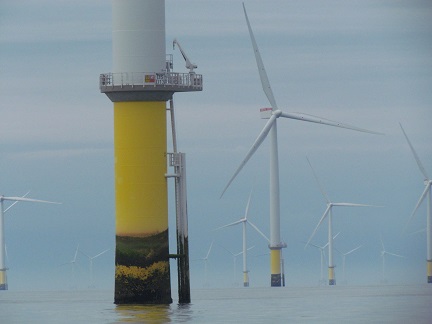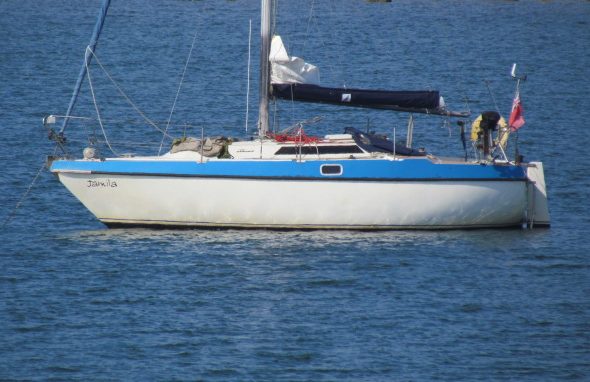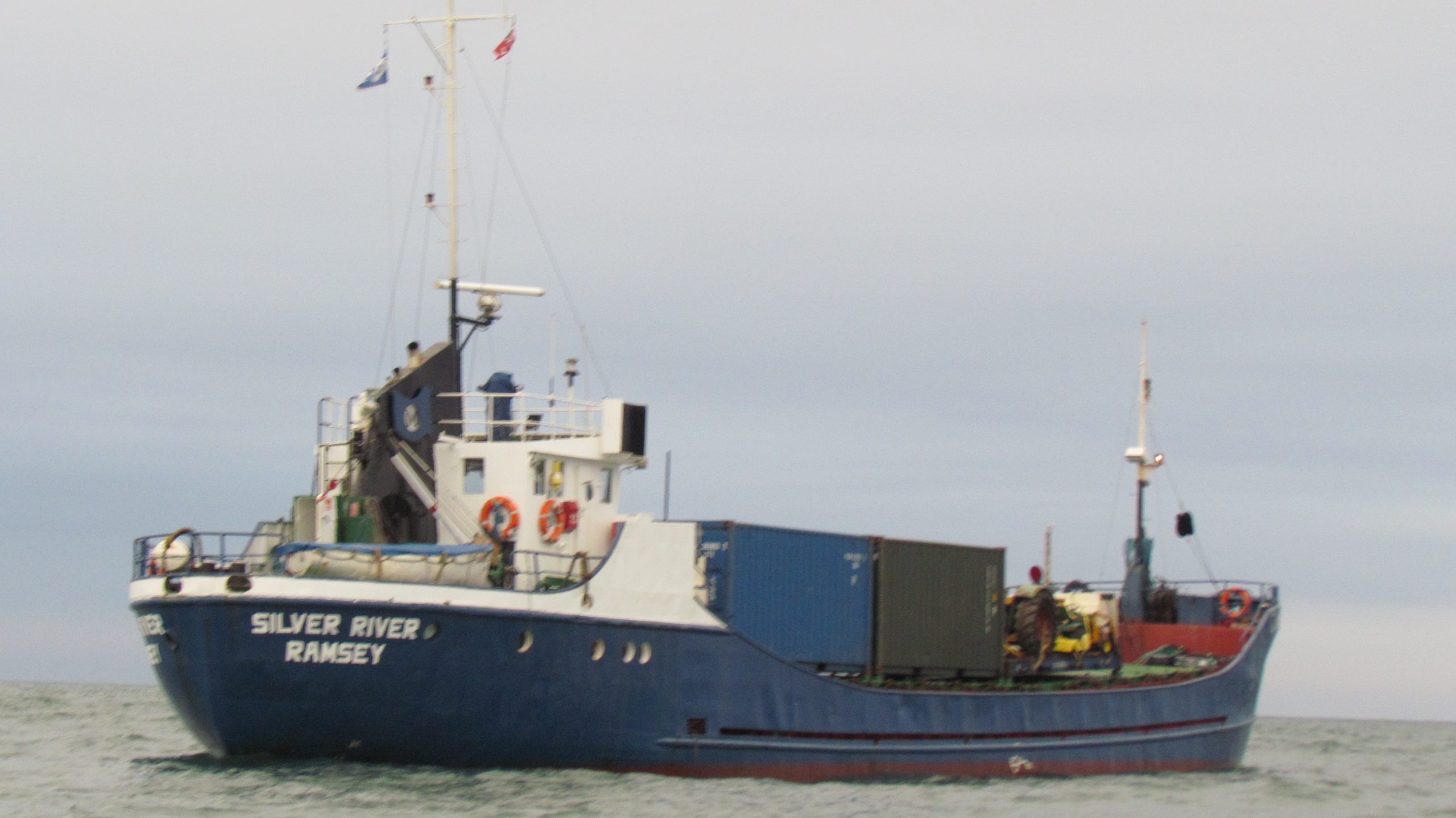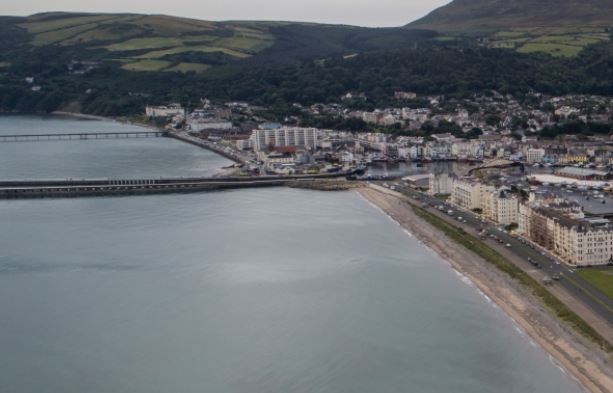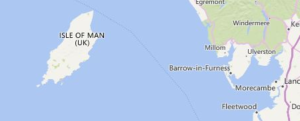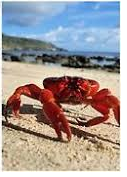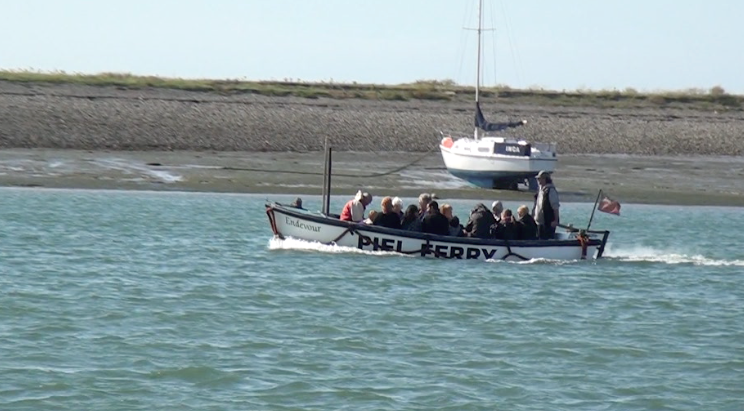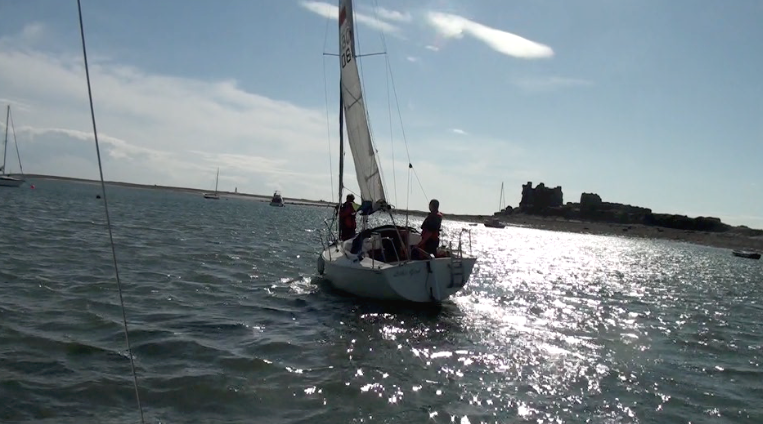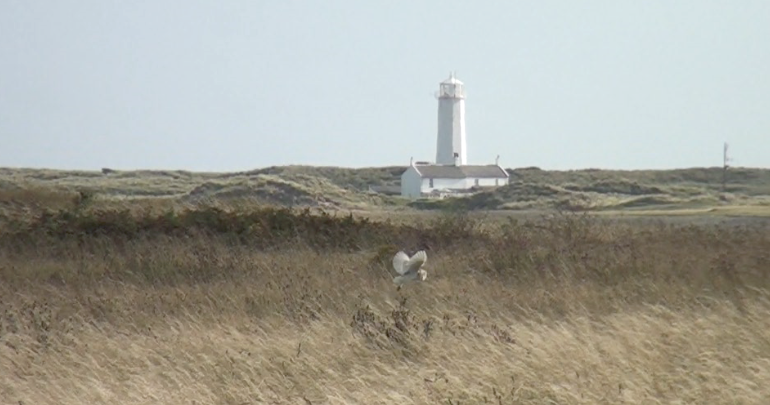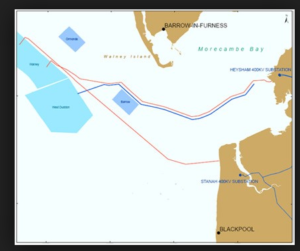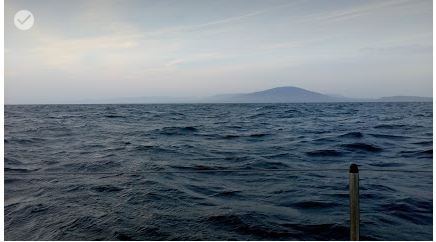Jamila, a Wardleys Marine Yacht Club sailing sloop was sat at anchor in Ramsey Bay following a perfect passage from Fleetwood. She had been powered over the Irish sea by a beam wind, carried for the most part by favourable tides and not using a drop of diesel. It has to be said there is a pleasure to be had by ghosting up to an anchorage under reduced jib and mainsail then putting the bow into the wind such that the boat comes to a gentle halt all timed perfectly so as to engender a gentle drift astern, such that the Skipper can waltz forward and lower the anchor. Yes, it may look Cool as a Cucumber to anyone strolling along the Ramsey promenade, but a word of warning it sometimes goes embarrassingly wrong.
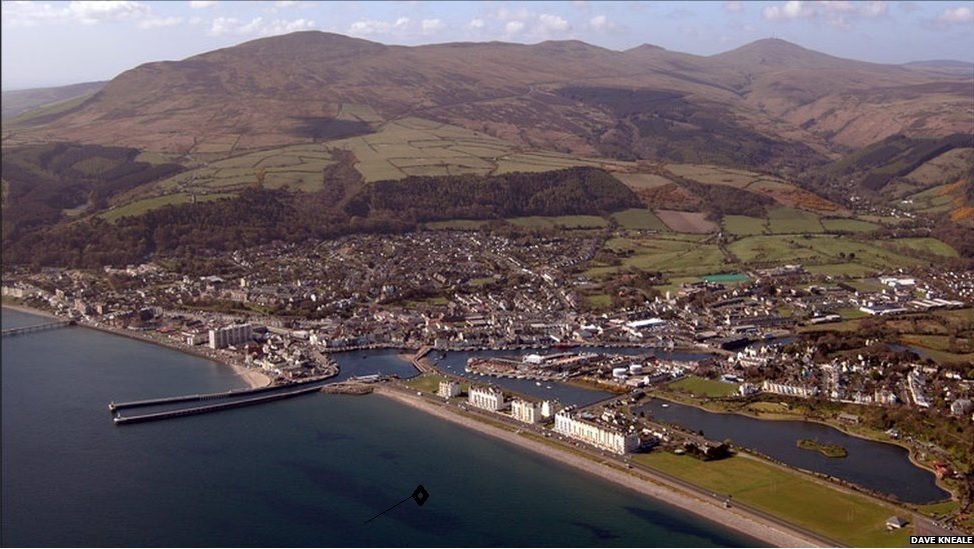
As discussed in in the first part of this trip, berthing in Ramsey was outlawed due to Covid. The skipper was by this time tired and was ready to put his head down. So following a last glance at Ramsey’s Georgian promenade terrace gently illuminated in soft pastel colours, and a final anchor check, the Wardleys Sailor hit the bunk to get some shut eye whilst the stars of the summer triangle revolved high overhead.
Getting deep nourishing sleep when single handed at anchor takes practice. It certainly helps when you are familiar with the territory. As for that night in Ramsey Bay, on the down-side I was not familiar, it was the first time, but on the up-side there was a reassuring anchorage symbol on the chart, I had a ROCNA type anchor dug in six metres below, and most importantly the weather forecast was good for the coming short night, so I was able to curl up on the starboard bunk feeling sufficiently relaxed to quickly fall into a long deep sleep.
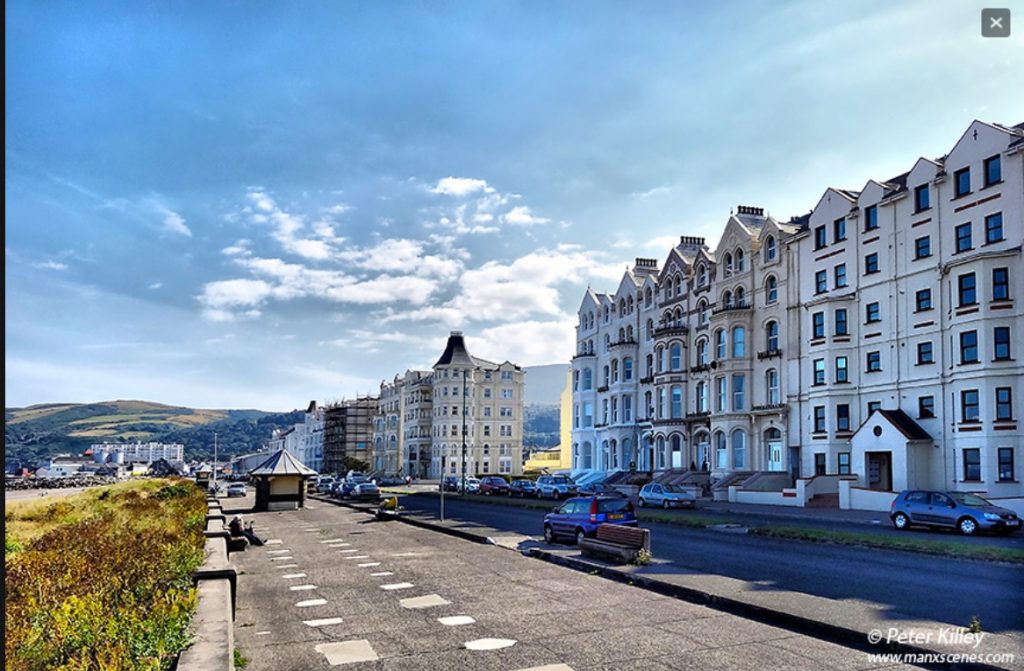
Four hours later a bizarre dream began to disturb me. There was a noise getting louder and louder that forced me in to semi consciousness. It was that of distant surf. It slowly dawned on me that I was indeed on a boat at anchor and this was no dream. It was still pitch black outside but with a tinge of morning twilight arriving in the east. The Ramsey promenade was now simply delignated by a simple line of street lights, and the Georgian terraces that had been previously illuminated, had disappeared into the dark. The surf was too close for comfort. A glance at the depth sounder set alarm bells ringing. Only one metre under the keel! I had calculated their being one and a half at low water the night before. And there was still an hour of ebb to go. I suspected that the situation was not that bad given the soft white sand all around, but then again there was a little bit of sea swell rolling in and a strengthening wind. Um, what was it to be? Snug back up into the sleeping bag? I knew from previous experience that further sleep would be difficult if nothing was done. So the engine was brought to life and engaged in tick-over slow ahead. Over twenty yards of wet cold chain were hauled onto the foredeck. With the anxiety reducing good deed done, and the sound of the surf further in the distance an extra hour of sleep was had.
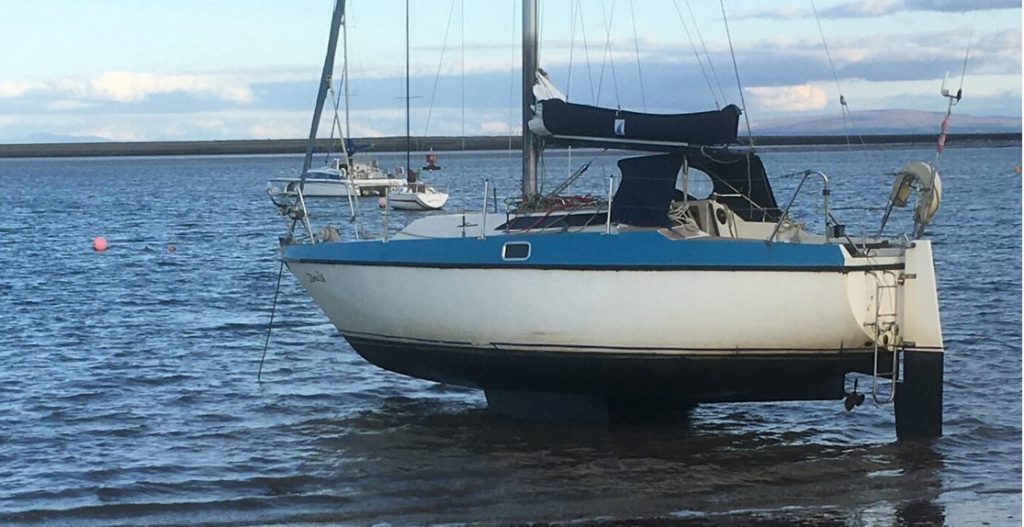
Jamila’s destination for the new day was Scotland. This was to be a passage across the north eastern part of the Irish sea to the small all tide harbour of Portpatrick. The wind was forecast as a Gentle Breeze but was closer to a Moderate Breeze and rising. Jamila could either pass close to the Point of Aire at the most northerly tip of the Island with the wind close on the nose, or take a detour around the Bahama Bank, The detour alone would take half a day’s extra at the very least. The north end of the Isle of Man had a fierce reputation for dangerous seas with a notorious tidal over-fall. The sailing guide recommended staying well clear of the bank at all costs once the tide was running. The guide says that a small boat should only pass at slack water, and stay within the deep channel that runs very close to the shore.
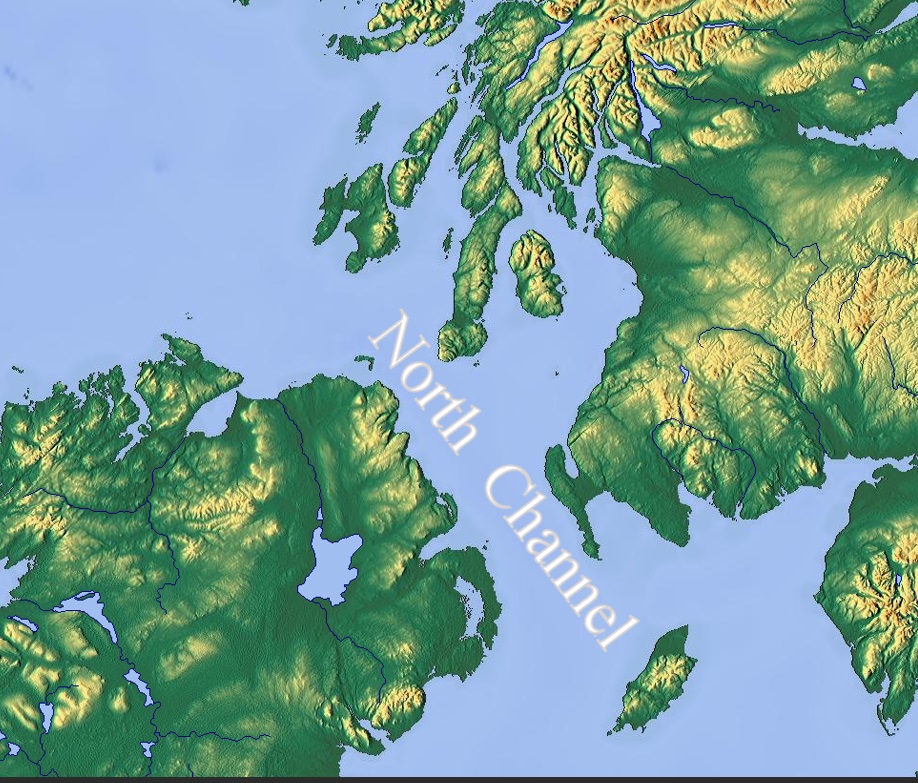
There was four hours to high water, and about that much windward sailing time required to reach the Point of Aire. So up went the sails and up came the anchor. As I did this, something caught my eye on the promenade 300 yards to stern. I recognize a pickup truck belonging to the harbourmaster with a distinctive yellow light. This vehicle is well known by those who have spent time against the Ramsey harbour wall. To allow ships through into the inner harbour, an impressive metal bridge painted in a colourful Victorian livery has to be swung open. To do this the truck, using its yellow flashing light, blocks the road. The harbourmaster then jumps out and climbs a short ladder on to the bridge and from a small cabin proceeds to swing the enormous metal structure. Then usually with a cheery smile, he leans out of a small sliding window and beckons the awaiting ships to enter. But what in heavens name was he doing on the promenade so early on a Sunday morning? Just maybe he was there keeping an eye on the lone Wardley’s sailor who being denied safe haven had been forced to swing at anchor in Ramsey Bay? It was probably not the case, but it was a nice thought anyway!
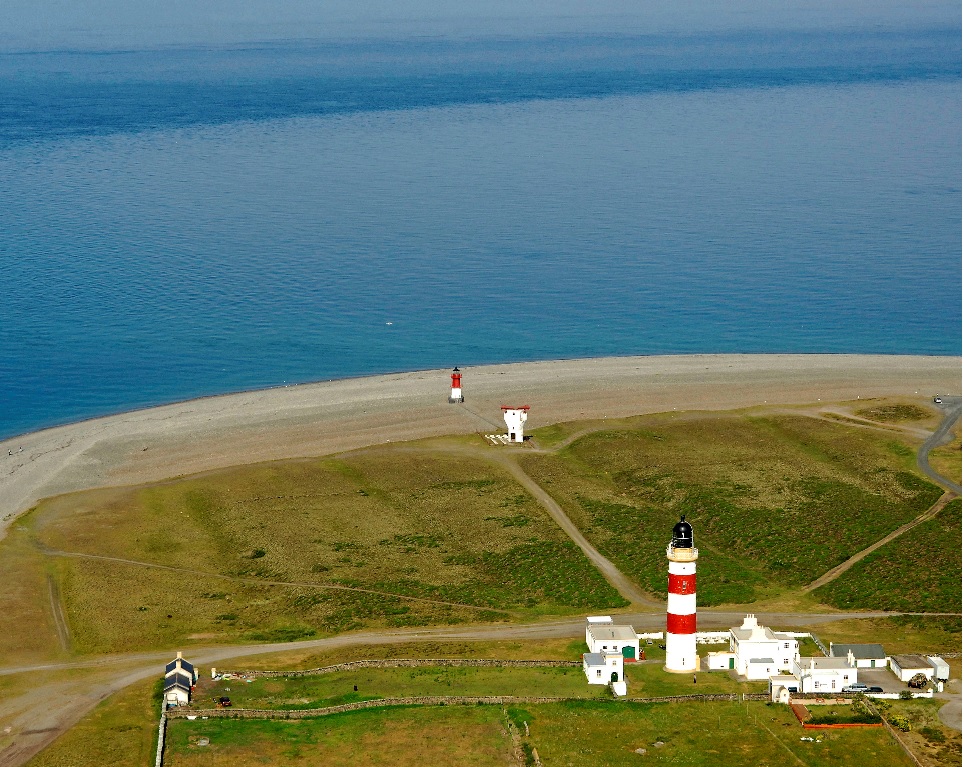
The ensuing sail up the north east coast of the Isle of Man was brisk and efficient. Staying close to the shore put Jamila into a slight back eddy adding an extra half knot. In actual fact last of the flooding tide was whipping around the north of the island in the opposite direction. Had Jamila been half a mile further to the east, the half a knot or maybe more would have been at least two knots running in the other direction. As the well-known saying goes “There is no such thing as a free lunch”, (referring to the practice of offering “free lunches” to entice heavy drinking in pubs), equally applies to Wardley’s sailors getting freebies out at sea off the Isle of Man, since the pay-back of being in the pinch point between the land and the Bahama bank was yet to come.
There was still an hour left of flood tide when Jamila began to draw level with the Point of Aire lighthouse. By this time the wind had mounted to a strong breeze (F5) coming from the East, and the coast line suddenly twisted further round to the east forcing Jamila ever close to the wind at the critical point. The tip of the Island came into view. To my horror I noticed the waves were breaking violently on the beach just up ahead in a way you would associate with storm conditions, and not an F5. Then something very strange began to happen around me. The sea began to change is such a way that it wasn’t following the normal rules. It changed from regular lines of waves from the east into a boiling cauldron. Monster pinnacles of water started to tower above Jamila on all sides. It was like being in the Swiss alps except at one moment you were deep in the valleys and the next you were on top of the Matterhorn. The wind was good and steady and I should have been making a good four knots and be safe in spite of a nasty looking lee shore just to port!
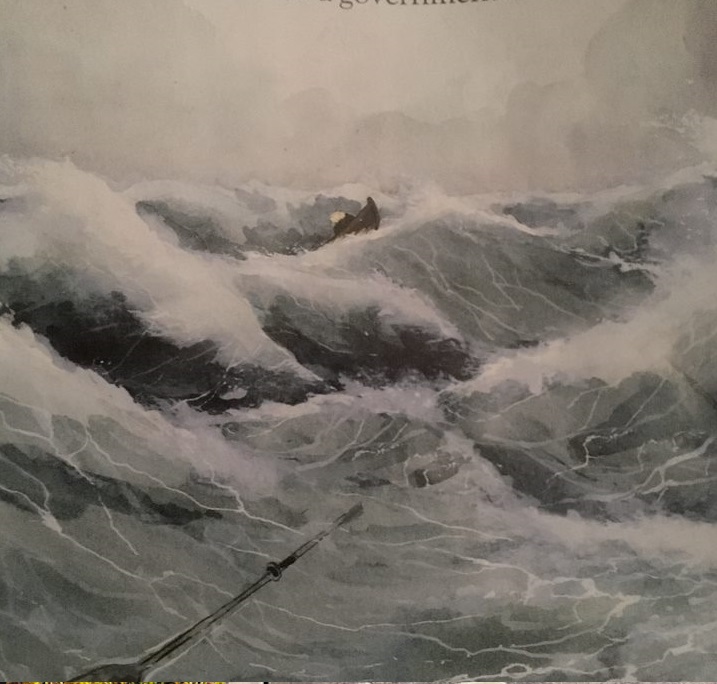
My heart dropped into my stomach when I noticed I wasn’t moving. Worst still, I was being slowly and remorsefully sucked towards the violent breaking seas on the beach. It was as if some monster squid from Jules Vern’s ‘Around the world in Eighty days’ had taken hold of my keel and was dragging me to my doom. Suddenly something caught my eye on the shore. It was a flashing yellow light. I craned my head around ripping the hood from my head for a clearer field of vision. It was the harbourmaster parked on the very last bit of Island. He was gesticulating to me above the breaking waves with hand raised into the air. He was making a twisting action with his wrist. “Start the engine”!!
I had been caught like a rabbit in the lights of a passing car. On went the engine full ahead. It wasn’t the tide that was at fault, neither was it the wind. It was the remorseless heaving of the waves. The wind was being knocked from my sails and the bow was coming to a halt on the steepness of the waves. Amazingly they weren’t even breaking, they were just too much and too none sensical for a small sailing boat to make headway with the wind on the nose. So this is what they call a tidal over-fall. God only knows what it would like in a full gale. The engine had saved the day. Instead of being stopped dead, Jamila’s bow was now punching a white spume splattered hole straight through them. With reference to a Dirty Harry movie, it felt like I’d pulled out my very own MAGNUM 50 cal. and with great joy and entertaining relief had bad guys scattering.
And so the disorder didn’t last long. With the tip of the island slowly falling into the distance, the sea miraculously transformed into a milky flatness. This was a very strange sea state indeed, when all the time the wind was blowing a fresh breeze, and then some. This strange state persisted for a full nautical mile until eventually the prevailing waves reverted back to a long set of orderly parallel lines. Having cleared the land’s end a new course was struck to the North West. The effect of backing off the wind on to the said direction put the wind on the beam. Jamila was not now battling the weather head on, and so began to gather speed and even surf on the face of the occasional big wave that came along. In short, the sea had behaved in an extraordinary manner, and I freely confess that I had been truly ‘Gas Lighted’ by the ‘Point of Aire’. Somewhere in the murky distance across a shimmering sea lay the Mull of Galloway.
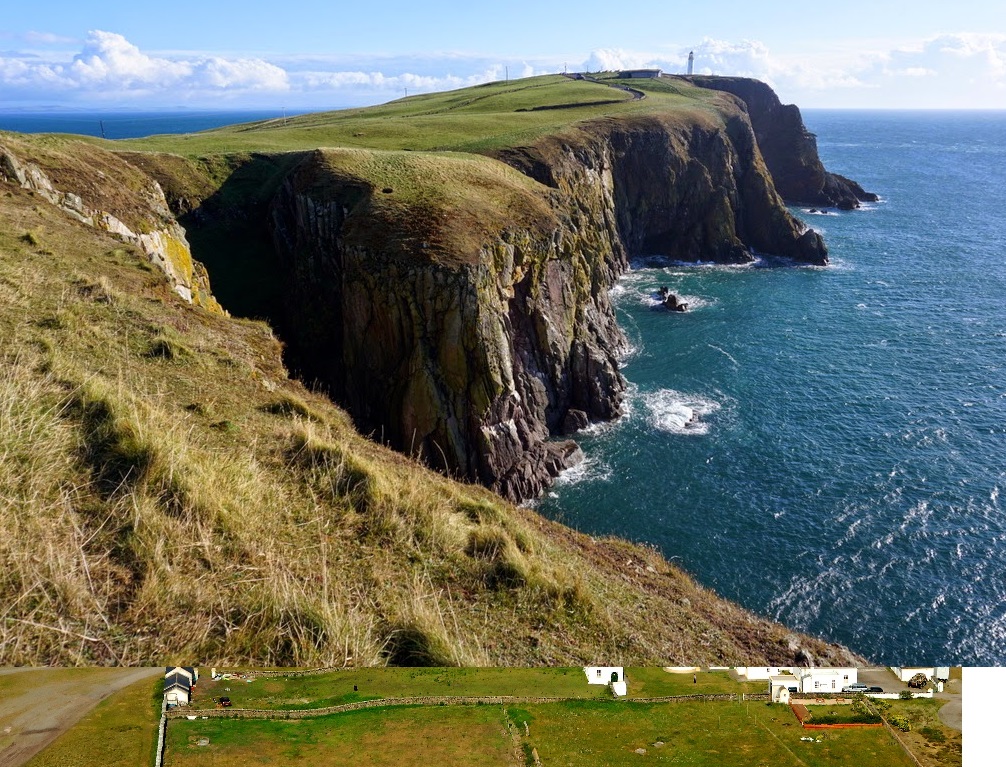
Many hours of coursing along in a declining wind had left Jamila somewhat under canvased, but eventually the coast of Scotland began to grow in size. After another short spell down below, the next visual check out on deck revealed the immensely tall cliffs of the Mull of Galloway in all their glory. The splendor was all the more emphasized when two yachts sailing incredibly close to the rocky shores were observed. At first I thought they might be Wayfarer dinghies since their white sails looked so small against the mighty cliffs. It turned out that in fact they were much bigger yachts on a heading to Ireland. After another forty minutes they were three miles up a head crossing my bow, and after yet another hour I could only just make out their white sails far to the west. Soon Jamila was also hugging the Galloway coast. As said, the wind was blowing away from the land so the dangers of a lee shore were more or less harmless. Eventually the cliffs reduced in stature revealing some very pleasant green countryside beyond. This last leg to the seaside village of Portpatrick dragged on a bit, and in fact it took longer than the open sea crossing just before. And now the thrust of the tide was no longer favourable where jamila had lost a knot of speed as a consequence. But still, the early part of the passage had been so rapid that there was no pressing rush to make it before the shops shut. The sea had become noticeably flatter too, being close to a windward shore, so maintaining progress to find a nice warm harbour side pub, despite the falling wind, was not going to be difficult. The entrance into Portpatrick was between a narrow gap in a rocky—potentially fibreglass crunching—coastline, and arriving from the south as most Wardley’s sailors would do, the main bulk of the town is more or less obscured by ‘Tandoo Point’ headland.
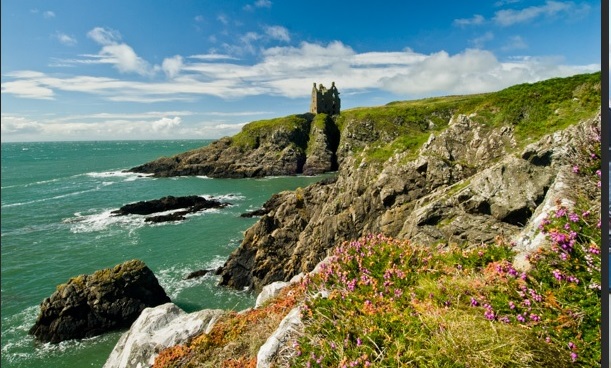
It was if Portpatrick was keeping its head down still expecting a shelling from one of the Kaiser’s battleships, It was not until arriving opposite to the entrance where a small beach and a coastal road lined with cottages revealed itself that I finally considered Portpatrick real and not a figment of the imagination. The entrance was between a gap in the rocks. The cruising guide instructions stipulate heading straight for the beach keeping a leading marker lined up with the white washed “Rose and Crown” pub and only when you are plumb opposite the stone walled entrance to the harbour do you execute a sharp 90 degree turn and then head into the main basin. Cutting the corner in an attempt to smooth out the turn will almost certainly run you aground on a submerged rock just to the left of the entrance.
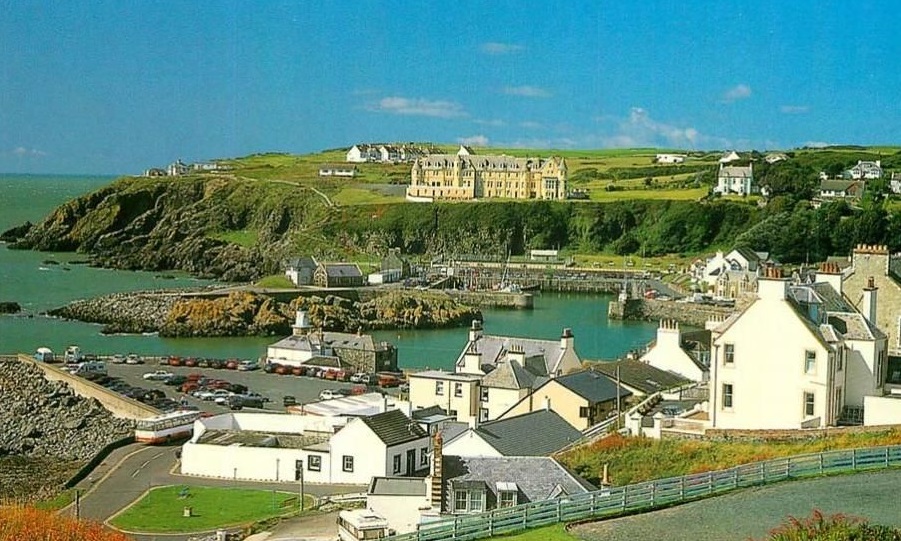
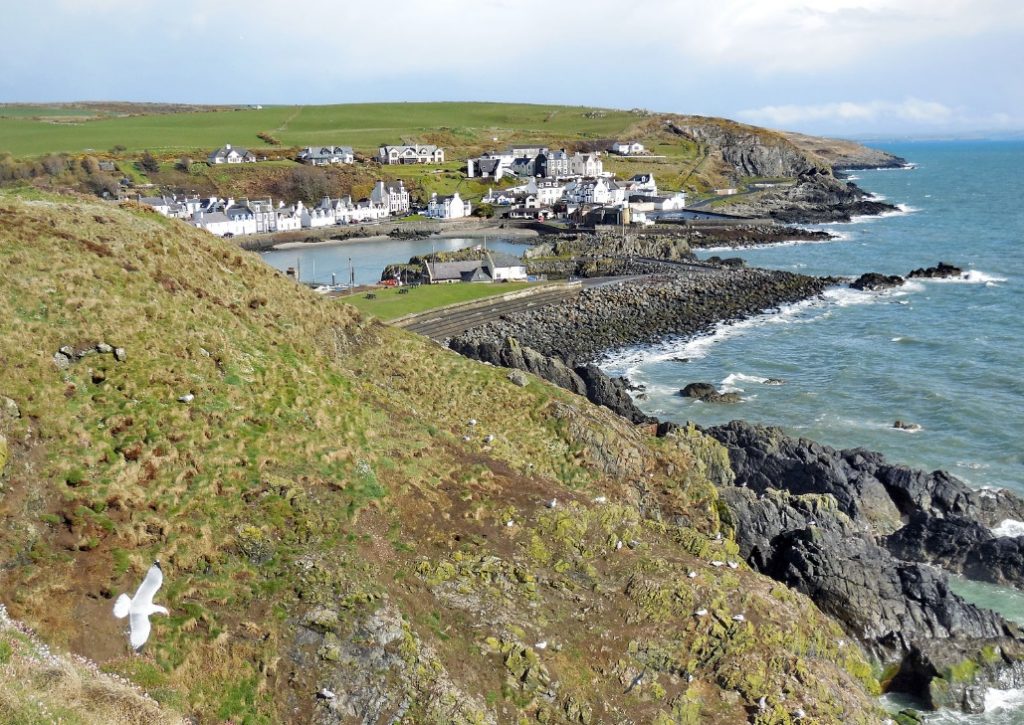
Now, imagine watching tele with your young family watching “Thomas the Tank Engine” steam into a small rural fishing port on his adventures. Well, there you have Portpatrick to a tee. There is even some fusion with another well-known TV show Balamory, because I’m sure I came across Mrs McCredie in a post office positioned not far from the water’s edge. I tied Jamila up against a dark towering and somewhat forbidding looking wall. Two giant sliding fenders on vertical rails kept the boat off the stone. The town’s plentiful array of pubs were choked-up with day trippers due to the lovely warm weather, and made worse by social distancing rules which caused hour long queues in some quarters. Instead I dined aboard on mash-get-smashed potato, fried spam, and garden peas. All that remained to do that day was to soak up the chocolate box harbour scene. As always, when the ambiance is perfect, which it was on that evening, even the ship’s stores tinned cuisine seemed to taste excellent. The skipper slept much better during the short summer night in Portpatrick. During the time of slumber Jamila quietly fell twenty feet down the harbour wall. It would have been nice to stay a little longer.
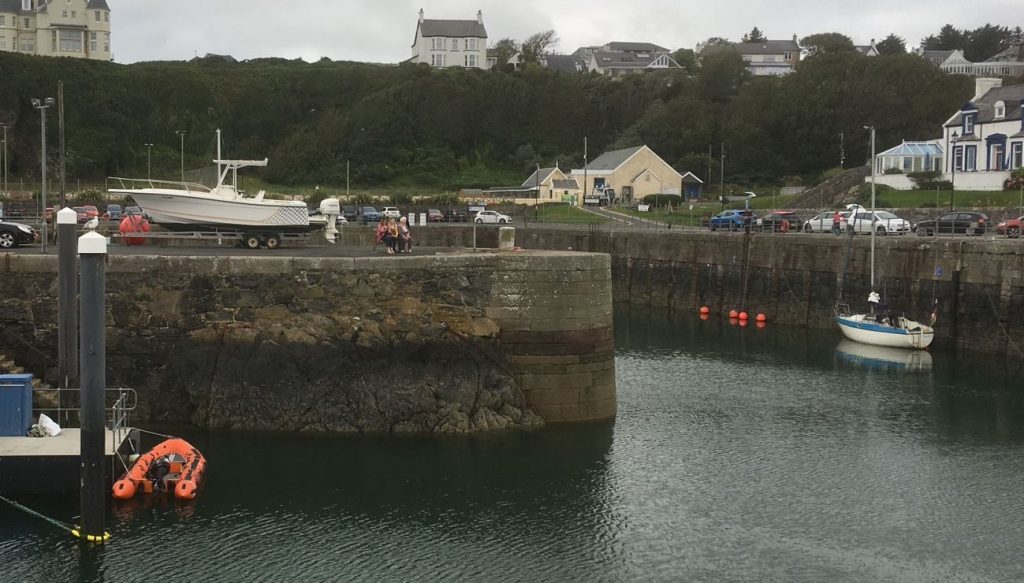
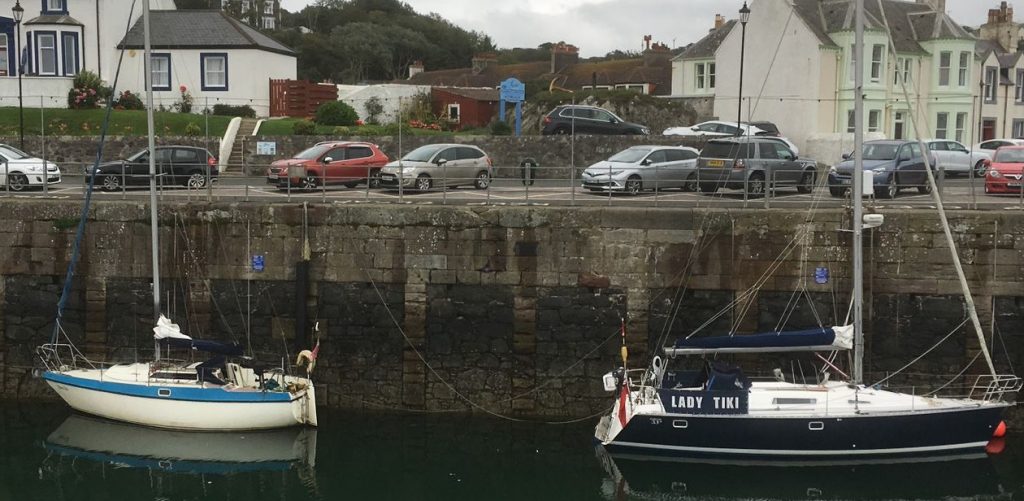

Still, this particular Wardley’s sailor had a tide to catch that would suck him up through the problematic stretch of fast flowing tidal water between Scotland and Ireland called the North Channel. Jamila’s destination was not a smart marina replete with floating pontoons, power points, and identikit bistro bars, but instead a WILD and potentially exposed sandy white bay with a little navigable creek running some way inland. The destination was called Cushendum situated on the north east coast overlooking Scotland’s Mull of Kintyre. After having scoped the location on Google Maps, it was tempting to venture up the creak and see the hinterland, but having recently re-watched the classic war film ‘The Eagles have landed’ where the German e-boat did venture in to such a creek but went haplessly aground sneaking out, helped dispel any such idea. Nevertheless the thought of making a fantasy motorcycle get-away across beautiful green north Antrim countryside with a sultry Jenny Agutter on the pillion did appeal.
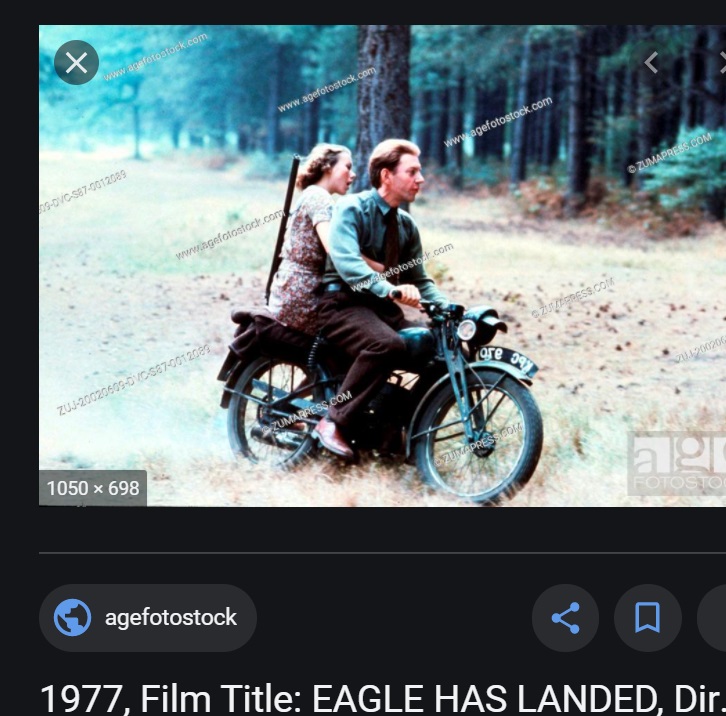
On my departure from Portpatrick, a rather touching moment occurred. I was on the quayside taking the ropes from the bollards, with Jamila seemingly along way down the ladder. When a little boy five to six years old approached, somewhat walking a head of the rest of his family, appeared to be wholly mesmerised by the small fishing port ambiance—exactly as I would have been at his age. He had been watching the sailing boats coming and going during the morning. He shouted over and asked if he could come with me. I don’t think I appreciated how deadly serious his question was and I answered glibly, “You certainly can but you’ll have to ask your mother and my next stop is Ireland”. Mother had caught up by this time shaking her head with a mournful expression explaining that Ireland was too far to come and pick little Johnny up. Relieved that I wasn’t the one to break the bad news I quickly escaped down the long vertical ladder and cast off. As Jamila slowly motored away from the quay I looked up and saw a very stoic looking six year old waving me off with a tear in his eye. It was a bitter sweet but beautiful moment. Everything briefly seemed to fall into place. I was in a charming location, on a gorgeous day with a god gifted wind and tide all laid out at my disposal.
The passage plan from Scotland to Ireland up the North Channel was to make best use of the prevailing easterlies and ebbing tide and get close to land north of Belfast Lough and so benefit from the back Eddie when the tide turns and starts to pile in from the North Atlantic. The point where the northern back-eddy meets the vast mass of water surging south is an outcrop of headland half a mile to the north of my destination.

The greater part of the sail across the sea to Ireland was a pure sun and clear sky experience. The sea was a deep gushing blue all the way over punctuated with the odd white breaking wave. The noticeable change from my previous passages was the fact that the Irish sea at this point was constricting rapidly such that the sea as morphing into a shipping highway with an identifiable stream going north and a counter stream running south. As Jamila cut across the entrance of Loch Ryan, the equally busy stream of ferries cutting across the shipping lane between Scotland and Belfast were encountered. Out there on the ocean is something live affirming about seeing a P & O ferry cutting across the sea leaving a long white wake. In my mind at least this is the very essence of a summer holiday in full bloom. As the day wore-on the horizon began to reveal a long broken black line, as the hills of northern Ireland hove into view. A few hours later it was resolved into long continuous line. Finally cliffs and white sand and the glinting reflection of sun from windows of still distant houses. As Jamila pushed further northwards helped along by a favourable back-eddy running parallel to the coast, the sun disappeared behind a layer of grey cloud. At the same time the wind dropped off significantly but remained sufficient to maintain the promised ETA of around 8pm at Cushendun.
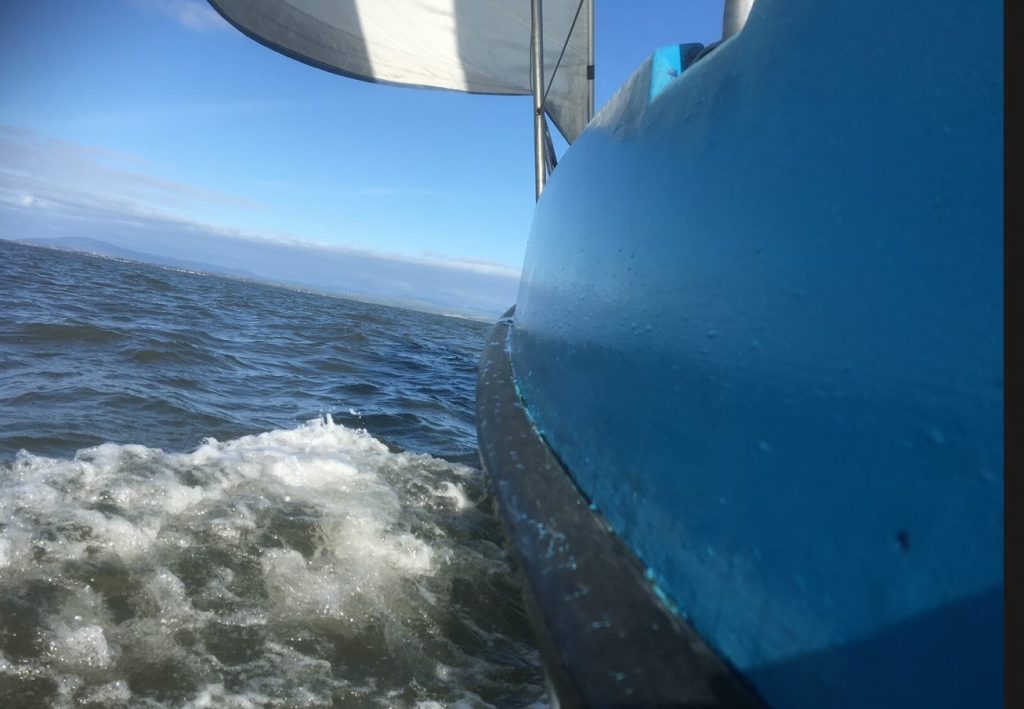
It was tempting to pull into Cushendall, which is a much larger town further to the south, but that would have meant further to go the following day and by this time I was well aware that tail end of Storm Ellen was well on its way. Cushendall was the first town I really got to look at up close. I could clearly make out the houses and see cars moving along the roads. Maybe another time. As I closed in on the sandy bay of my destination drizzle started to fall. The wind and died away almost completely and it was the last of the tide that was moving ever closer to my final anchorage. The engine went on at the very end mainly so that I could scout around a little both visually and studying the various depths using the sounder. The settlement consists of a spit of retro modern and original houses all joined together in a long line a bit like a classic terrace house and all painted bright white. To the right is the bay peppered with only a few original cottages and grander looking houses set further back in the distance, but remaining basically unspoilt by modern builders. Good on the folks at Cushendun!
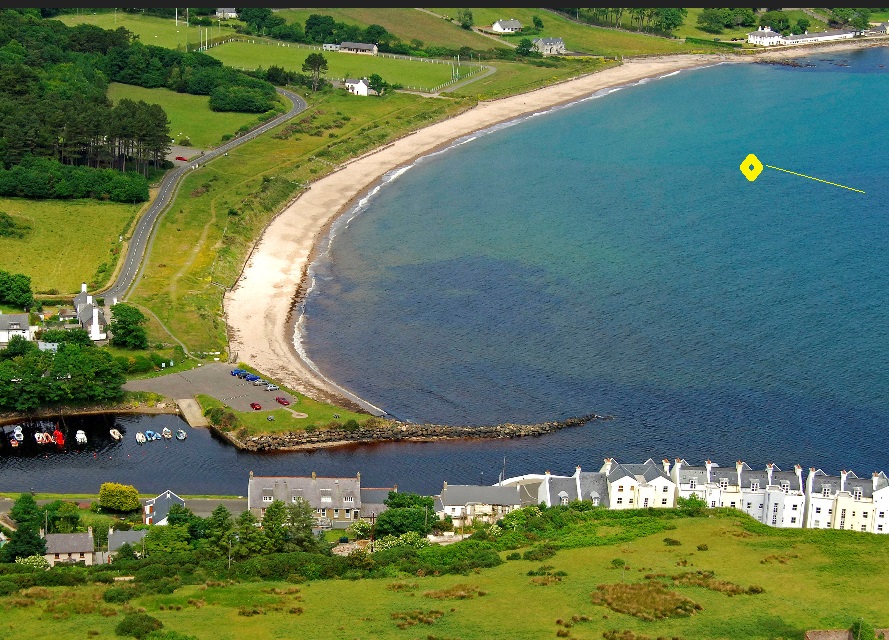
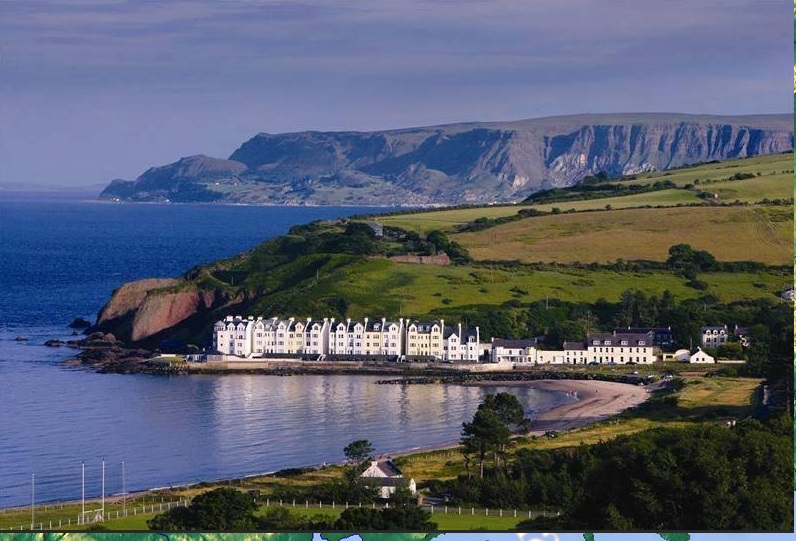
An evening at anchor was spent out in the cockpit under a very slight drizzle. Two to three families could be seen on the beach braving it in their bathing costumes, and to hell with the weather. Maybe one of these days some of them will also become sailors and sail around the shores of the Irish sea. And who knows…
The next instalment of the WMYC yacht Jamila’s summer cruise will cover the next two days of the passage from Cushenden in Northern Ireland to the sailing gem that is the ‘West coast of Scotland’. The ultimate destination is to a magical location called ‘The Fairy Isles’ tucked away at the top of Loch Sween.

